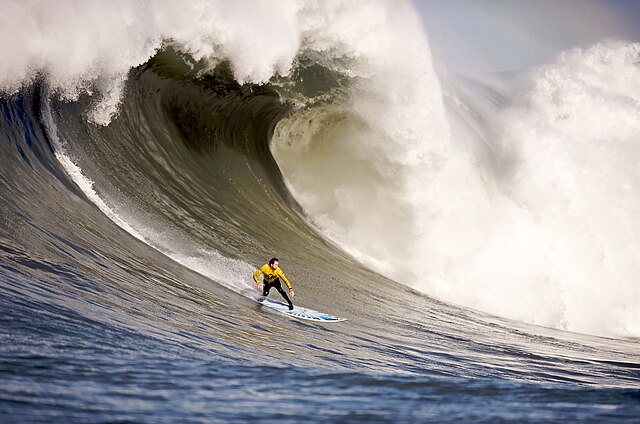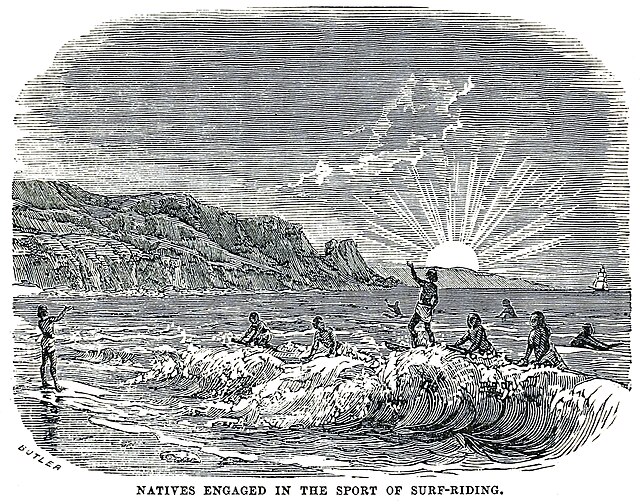Surf culture includes the people, language, fashion, and lifestyle surrounding the sport of surfing. The history of surfing began with the ancient Polynesians. That initial culture directly influenced modern surfing, which began to flourish and evolve in the early 20th century, with its popularity peaking during the 1950s and 1960s. It has affected music, fashion, literature, film, art, and youth jargon in popular culture. The number of surfers throughout the world continues to increase as the culture spreads.
2010 Mavericks competition at Half Moon Bay, California
Pontiac woodie, used by early surfers
Alphonse Pellion, Sandwich Islands: houses of Kalanimoku, Prime Minister of the King; fabric making. In the foreground is an olo board, the largest of the Hawaiian wooden surfboards. (c. 1819)
Duke Kahanamoku and the Hui Nalu Club
Surfing is a surface water sport in which an individual, a surfer, uses a board to ride on the forward section, or face, of a moving wave of water, which usually carries the surfer towards the shore. Waves suitable for surfing are primarily found on ocean shores, but can also be found in standing waves in the open ocean, in lakes, in rivers in the form of a tidal bore, or in wave pools.
Mavericks Surf Contest 2010
Ítalo Ferreira
Caballitos de totora, reed watercraft used by fishermen for the past 3000 years at Huanchaco, Peru, known for its surf breaks
Hawaiians surfing, 1858








